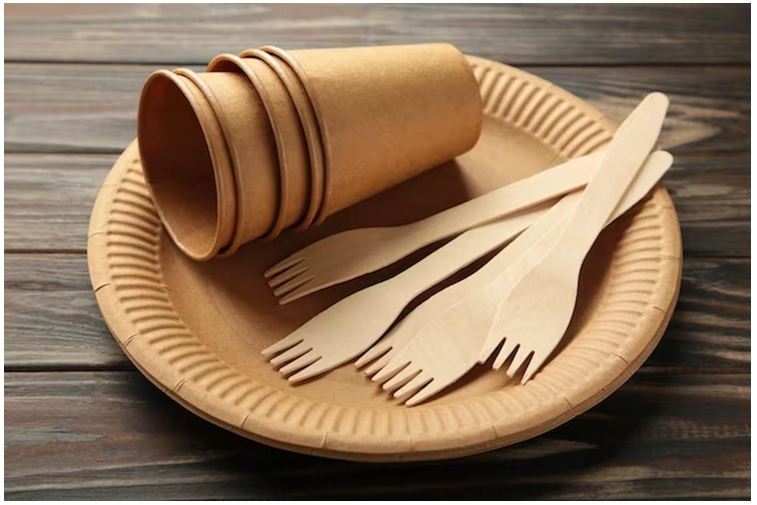The development of disposable food packaging has progressed significantly throughout the years. Food on the move has come a long way from its unfavourable reputation as an environmental hazard a few decades ago. The food packaging business has introduced novel trends in disposable food packaging in response to the growing interest in environmental issues. This article will discuss how these movements alter our perspective on single-use cutlery.
Introduction to Disposable Cutlery
For decades, the food business has used disposable plastic, wood, or bamboo cutlery. Many restaurants, food trucks, and event hosts use it for its ease and affordability. One-use plastics’ environmental effects have prompted concerns, prompting the quest for more sustainable alternatives.
Sustainable Materials
A major disposable cutlery is using sustainable materials. Pollution and extended decomposition times have made traditional plastic cutlery a major environmental issue. In response, manufacturers make disposable cutlery from bamboo, cornflour, rice, and wheat.
Bamboo is popular since it’s renewable and biodegradable. Bamboo cutlery provides a sustainable alternative to plastic since it is heat-resistant and decomposes naturally. It shows how material innovation is changing throwaway cutlery.
Edible Cutlery
Taking sustainability a step further, some companies are pushing the boundaries of innovation by creating edible cutlery. Imagine utensils made from dough, rice, or other edible ingredients you can consume with your meal. These edible cutlery solutions avoid garbage and provide a fun and unusual twist to mealtime.
Edible cutlery may minimise plastic waste and the environmental impact of disposable utensils. Their popularity is growing and might shape throwaway cutlery.
Design and Functionality
Beyond materials, innovative trends in disposable cutlery also focus on design and functionality. Manufacturers are reimagining utensils’ shape, ergonomics, and features to enhance the user experience and make them more practical for various food-related scenarios.
Compact and Foldable Designs
This is no longer limited to the standard fork, knife, and spoon. Innovative designs include portable, compact utensils that save packaging waste and are simple to carry. Hikers, campers, and travellers who want space-saving silverware love these designs.
Some foldable utensils even come with a protective case, ensuring hygiene and making them a suitable choice for individuals concerned about cleanliness. This trend has gained momentum in light of recent health considerations.
Ergonomic and Specialty Shapes
Disposables are no longer just a means to an end; it’s also becoming a part of the dining experience. Manufacturers are introducing ergonomic designs that enhance grip and comfort, making disposable utensils feel more like their reusable counterparts. Specialty shapes, such as sporks (a combination of spoon and fork) and chopstick-style cutlery, cater to specific cuisines and dining preferences.
Innovation in design continues beyond aesthetics and functionality. Some disposable cutlery is designed for specific tasks, such as cutting, stirring, or even spreading condiments, providing users with versatile options for their culinary adventures.
Technology Integration
As we move into the digital age, technology is making its way into disposable cutlery, enhancing convenience and addressing various challenges.
Smart Packaging and Labels
Smart packaging is becoming more common in food, including throwaway cutlery. Some disposable cutlery has QR codes or tags that reveal its components, origin, and disposal instructions. This technology helps consumers make more informed choices and supports sustainability efforts by guiding users on how to properly dispose of their utensils.
Antibacterial Coatings
In response to growing concerns about hygiene, some cutlery manufacturers are incorporating antibacterial coatings into their products. These coatings help prevent the growth of harmful microorganisms on the utensils, ensuring a safer dining experience. This trend is particularly relevant in light of recent health crises, where cleanliness and hygiene have become paramount considerations.
Conclusion
Disposable cutlery is transforming remarkably, driven by the need for more sustainable options, improved design and functionality, and technology integration. Sustainable materials like bamboo and edible utensils are changing the game, reducing environmental impact, and offering unique dining experiences. Innovations in design, such as compact and ergonomic shapes, are making this cutlery more user-friendly and versatile. Technology, with smart packaging and antibacterial coatings, is enhancing convenience and safety.
Consumers should anticipate more and better disposable cutlery as these new trends emerge. Environmental concerns and sustainability are still issues, but a more eco-friendly and user-friendly disposable cutlery sector is promising. When you use a disposable fork, knife, or spoon, you may be startled by the new innovations in this often-overlooked food packaging sector. These trends might make your dinner more pleasurable and help the environment.




